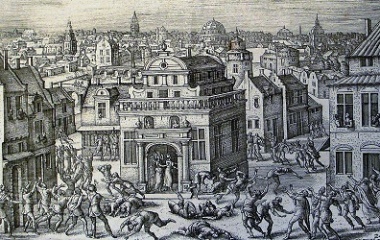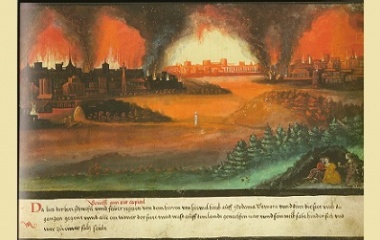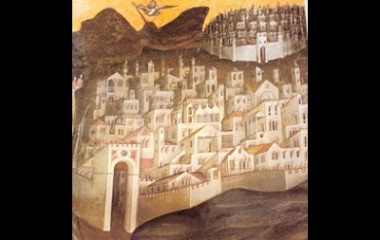God rained down fire and brimstone on the sinful cities of Sodom and Gomorrah, turning the buildings and their inhabitants to ash. Were their liberal morals and sexuality their real transgression, or rather their practice of an ancient form of xenophobia?
What Are Sodom and Gomorrah?
Sodom and Gomorrah were two ancient cities referred to in the Old Testament of the Bible, as well as in the Quran. The cities were located on the Jordan River plain, near the land bordering the central area of the Dead Sea. In about 1500 BC the plain was very fertile, since the Dead Sea then received fresh water, allowing for agriculture and providing grazing for cattle. The word “sodomy” allegedly has its roots in the town of Sodom, due to the sexual acts believed to have been committed in the sinful city. Sodomy is viewed as a sin in certain religions. In Islamic Sharia law, the act of sodomy is punishable by death.
Source
Genesis, in the Old Testament of the Bible, is the main source of information on the evil cities. God wanted to destroy the cities, but Abraham asked Him to spare them, if he could find 50 people who were not grievous sinners. Unfortunately, he could not even locate 10 such people, and the cities were destroyed by fire and brimstone. Whether accused of homosexual acts, inhospitality or wanting to rape the strangers that visited the city, the people were annihilated for their sinful ways.
Cities of the Plain
Sodom and Gomorrah were two of five cities referred to as the cities of the plain. The three other cities were Zeboiim, Admah and Bela. However, only the last, Bela, has any evidence of having actually existed, and is said to be the ancient city of Zoara. Many different places have been suggested as being the locations of Sodom and Gomorrah, including the modern day Bab edh-Dhra, Khanazir, Feifa or Tall el-Hammam. The sites are all located around the Dead Sea and have evidence of sulfur deposits and the remnants of what appear to be man-made structures.
The archeologist Steven Collins believes Tall el-Hammam to be the location of Sodom. Collins suggests the massive city was abandoned towards the end of the Bronze Age. The city consisted of two major regions and was encircled by a thick wall the professor’s team uncovered. A structure which may have been a palace with a giant door has also been discovered, as well as various gates and towers.
In Gnosticism
Gnostic beliefs differ in their interpretation of the story of the sinful cities. Gnostics purport the people were punished for breaking free of their ignorance and acquiring knowledge that would free them. The people were not committing sins, but rather living a life of freedom, which included sexual liberty. Gnostics further assert that man was never guilty of sin, but rather that sin existed naturally in the physical world.
The Cities’ Destruction
One theory is that the cities were destroyed by a major earthquake that occurred on the East African Rift (extending from Jordan to Mozambique, in East Africa) sometime around 1900 BC. Another theory suggests that the destruction was caused by a meteor. Conspiracy theorists speculate that Sodom and Gomorrah were destroyed by ancient atomic weapons, evidenced by the high salt content in the area. Researcher LM Lewis claims the composition of the sand in the area would change after a nuclear explosion, much like in Hiroshima, where the soil changed into a silica-like substance.
Depending on which theory you believe, the once lush fertile lands around the Dead Sea were destroyed by God, natural disasters or perhaps ancient atomic warfare, wiping out the evil sinners and nearly all evidence of their existence. Though the story is commonly interpreted today as a reference to the sin of homosexuality and God’s punishment, perhaps the Sodom and Gomorrah inhabitants’ violent abhorrence of strangers is an anthropological mystery worthy of further investigation.
Sodom and Gomorrah






No comments:
Post a Comment